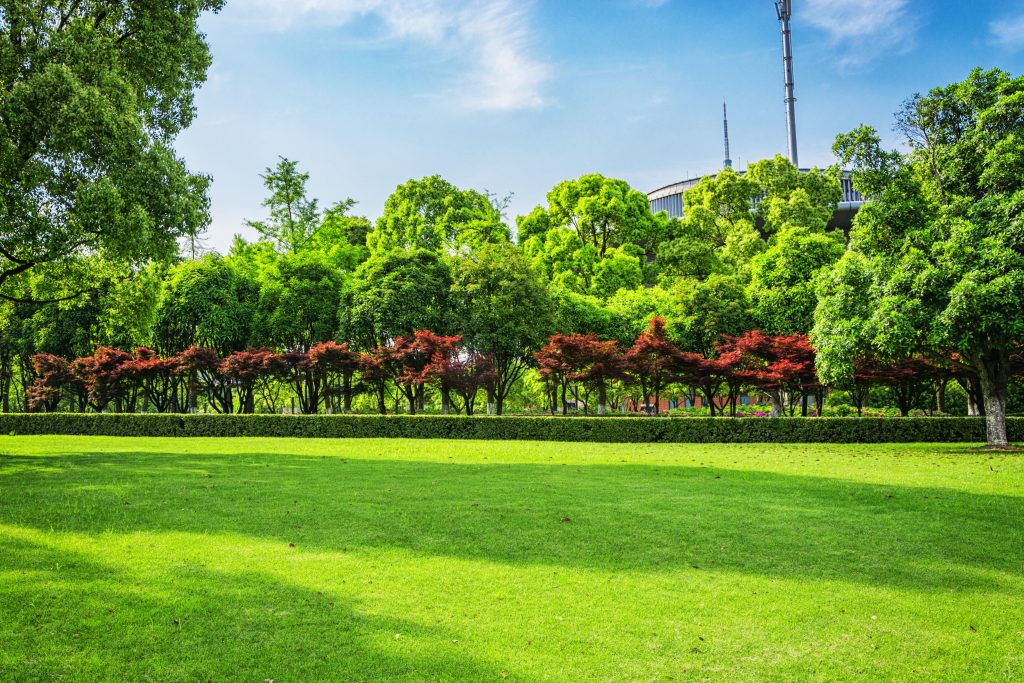
In the ever-evolving realm of real estate and architectural innovation, the synergy between home construction and landscape design has become an increasingly important facet of creating aesthetically pleasing and environmentally conscious living spaces. The incorporation of landscapes into new construction projects has gained substantial momentum, reflecting a harmonious blend of human habitation and natural surroundings. This article delves into the multifaceted relationship between new home construction and landscape design, exploring aspects such as costs, benefits, considerations, and the overarching impact on homeowners and the environment.
New construction homes have transcended mere structural designs and have now embraced the notion of holistic living spaces. The integration of landscape design in such projects is emblematic of this paradigm shift. Landscape architects, designers, and builders collaborate to envision and materialize outdoor spaces that seamlessly extend the interior environment. The purpose is twofold: to enhance the visual appeal of the property and to foster a connection between homeowners and the natural world right outside their doorstep.
Cost is often a critical factor when considering landscape integration in new construction. While the initial expenses can be daunting, the investment yields a plethora of short-term and long-term benefits. The average cost of incorporating landscaping into a new home construction project can vary widely based on factors such as the size of the yard, the type of plants and features desired, soil quality, and the complexity of the design.
The base cost may encompass fundamental landscaping elements such as planting grass, installing sod, shrubs, and trees, as well as enriching the soil with compost and topsoil to ensure a conducive environment for plant growth. More elaborate designs may involve hardscaping elements like patios, pathways, water features, and outdoor seating areas.
One might wonder if the upfront costs of landscaping in new home construction are justified. Beyond the immediate visual gratification, there are substantial long-term savings that come into play. A well-designed landscape can contribute to energy efficiency by providing shade in the summer and windbreaks in the winter, thereby reducing heating and cooling costs.
Moreover, by choosing native plants that are adapted to the local environment, homeowners can reduce the need for excessive watering and maintenance. These plants are often hardier and require fewer interventions, resulting in significant savings in terms of water bills and ongoing care.
Several key considerations come into play when integrating landscape design into new construction. The first and foremost is the land itself. The topography, soil type, and existing vegetation are pivotal factors that dictate what types of plants will thrive and what modifications might be necessary.
The climate of the region also plays a role in plant selection. Native plants are well-suited to their local environments, requiring less water and maintenance. The hardiness zone and weather patterns impact plant choices, ensuring a sustainable and vibrant landscape year-round.
Landscape architects and designers are instrumental in translating homeowners’ visions into reality. These professionals possess the expertise to analyze the land, consider the homeowners’ preferences, and formulate designs that align with both aesthetic aspirations and environmental sustainability.
Collaboration is key; homeowners can share their ideas and expectations, while designers contribute their knowledge of plant selection, spatial arrangement, and hardscaping techniques. The end result is an outdoor space that seamlessly complements the new home, enhancing its overall appeal and functionality.
In an era marked by heightened environmental consciousness, landscaping in new home construction projects presents an opportunity to contribute positively to the ecosystem. Native plants support local biodiversity and attract pollinators such as bees and butterflies, promoting a healthier environment for both flora and fauna.
Additionally, well-planned landscapes can assist in water conservation. Implementing efficient irrigation systems and selecting drought-tolerant plants can significantly reduce water usage. This not only benefits homeowners’ wallets but also alleviates stress on local water resources.
The landscape construction process in new builds is a carefully orchestrated endeavor. It involves several stages, from the initial design concept to the installation of features. Each step demands attention to detail and expertise.
Design Phase: Landscape designers collaborate with homeowners to conceptualize the layout, plant selections, hardscape features, and overall aesthetic.
Preparation: The land is prepared, involving tasks such as grading the soil, adding compost and topsoil, and addressing drainage concerns.
Planting and Installation: Native plants, trees, shrubs, and hardscaping elements are meticulously installed according to the design plan.
Irrigation and Maintenance: Efficient irrigation systems are put in place to sustain the landscape. Homeowners receive guidance on ongoing maintenance to ensure the longevity of the design.
It’s important for homeowners to approach landscape integration in new construction with a well-defined budget. The cost of landscaping can vary widely based on the scope of the project and the types of materials and plants chosen. Seeking quotes from multiple contractors and designers can provide a clearer picture of the potential costs involved.
Homeowners should also consider the potential return on investment. A beautifully landscaped yard can increase the overall value of the property, making it an attractive proposition should they decide to sell in the future.
The integration of landscape design into new home construction is a testament to the evolving priorities of homeowners, who seek not only functional living spaces but also an authentic connection to the environment. The collaborative efforts of architects, designers, and builders result in outdoor havens that balance aesthetics, functionality, and sustainability. While the costs may vary, the benefits in terms of visual appeal, environmental contribution, and potential savings are undeniable. As the construction industry continues to evolve, the harmonious integration of new construction and landscape design will undoubtedly remain a cornerstone of modern living.
[geocentric_weather id=”45ff4ccd-3d3f-498e-b0b9-91aaaf766bc4″]
[geocentric_about id=”45ff4ccd-3d3f-498e-b0b9-91aaaf766bc4″]
[geocentric_neighborhoods id=”45ff4ccd-3d3f-498e-b0b9-91aaaf766bc4″]
[geocentric_thingstodo id=”45ff4ccd-3d3f-498e-b0b9-91aaaf766bc4″]
[geocentric_busstops id=”45ff4ccd-3d3f-498e-b0b9-91aaaf766bc4″]
[geocentric_mapembed id=”45ff4ccd-3d3f-498e-b0b9-91aaaf766bc4″]
[geocentric_drivingdirections id=”45ff4ccd-3d3f-498e-b0b9-91aaaf766bc4″]
[geocentric_reviews id=”45ff4ccd-3d3f-498e-b0b9-91aaaf766bc4″]